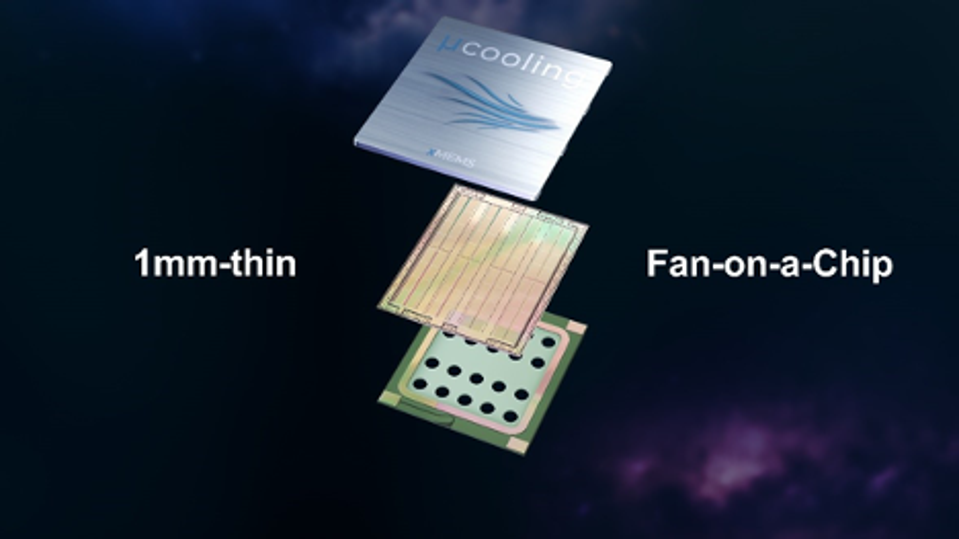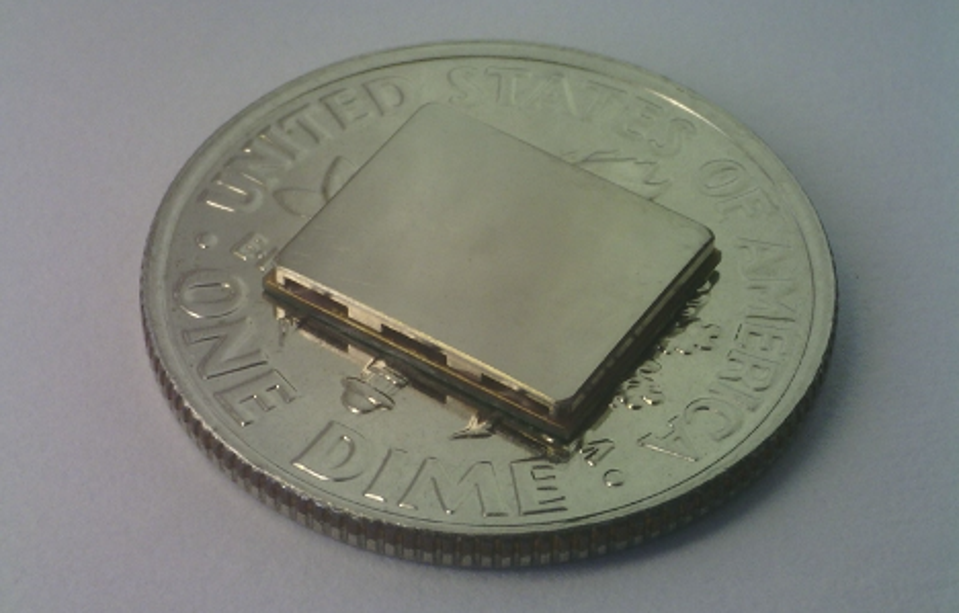
As the solid-state cooling space continues to heat up—pun intended—new companies are entering the market to help cool things down. xMEMS is a company that has been around since 2018 and has been disrupting the audio market with its micro speaker and active acoustic vent technologies. However, the company has discovered that this same IP can be used to help cool microchips with a solid-state solution that uses piezo actuators.
Cooling continues to be an issue for the mobile industry, especially as more devices gain more onboard AI compute. Most smartphones and other passively cooled devices today depend on large vapor chambers and heat pipes to spread the heat across the device’s body and use the frame or body of the device to cool it. Taking another tack, some manufacturers like Red Magic have 20,000 rpm active cooling fans, which also get the job done but create lots of noise and increase power consumption. Yet these fans deliver real results and don’t throttle as badly as other smartphones do during prolonged gaming sessions. In the bigger picture, while passive cooling is nice, active cooling is always better and prevents throttling while ensuring more stable performance on most devices.
XMEMS’ Approach To Cooling
Now xMEMS hopes to displace thermal throttling and passive cooling solutions, including vapor chambers and graphite heat spreaders, with its own xMEMS semiconductor-based active cooling solution. If this sounds familiar, that’s because there is another company called Frore Systems doing something similar for the PC sector. Frore’s AirJet technology also uses micro-electromechanical systems (the technology that gives xMEMS its name) with vibrating membranes that create pulsating jets of air that run across a hot surface to cool it down.
The xMEMS solution, which the company itself directly compares to Frore Systems’ offering, is a considerably smaller solution than Frore’s original AirJet product. The xMEMS solution is 9.3mm x 7.3mm x 1mm, while the AirJet Mini Slim (Frore’s smallest) is 27.5mm x 41mm x 2.8mm. Based on these dimensions and cooling performance, xMEMS says its product is 16x more efficient in airflow per volume while using one-tenth of the power. While Frore’s solution can cool up to 5 watts of TDP, it consumes up to 1 watt of power to achieve that—which, in my opinion, is too much power for many very thin-and-light mobile products. That said, xMEMS did not provide me with a complete number on the TDP that its dual-chip XMC-2400 solution can cool.

Versatility And Design Impacts
xMEMS’ cooling solution is versatile: it comes in both top-vented and side-vented versions depending on the specific application and cooling needs. xMEMS also uses a multi-chip approach, with the cooling chip separate from the controller that regulates the voltages driving the MEMS inside the chip. This product is not finalized yet, but it is expected to have negligible impact on the PCB design of any device using it.
That said, it would be wise to integrate this functionality somewhere else, like on the SoC, to make system design less complex. On the plus side, the xMEMS cooling solution is IP58 certified, so it can still cool a device without compromising water resistance. The company is dual-sourcing its manufacturing at TSMC and Bosch to ensure that it has enough capacity to meet potential customer demand.
Current And Future Applications
While xMEMS doesn’t have any customers to announce yet, it does seem that SSDs and storage are very low-hanging fruit for both xMEMS and Frore. Additionally, it is probably inevitable that xMEMS will work with smartphone manufacturers, although they also have much more complex systems and longer lead times. xMEMS says that it will provide samples of the XMC-2400 to potential customers in Q1 of 2025, so we probably won’t see it in commercial devices until the end of 2025 or early 2026.
xMEMS’ entry into the solid-state cooling market validates the market that Frore has created, and frankly I’m glad to see that there’s a much smaller solution for uses that Frore’s technology cannot yet address. With the growth of AI and all the new processors that haven’t even come to fruition yet, there will be an added push for solutions like xMEMS that solve the cooling problems that so many devices have today.























































































